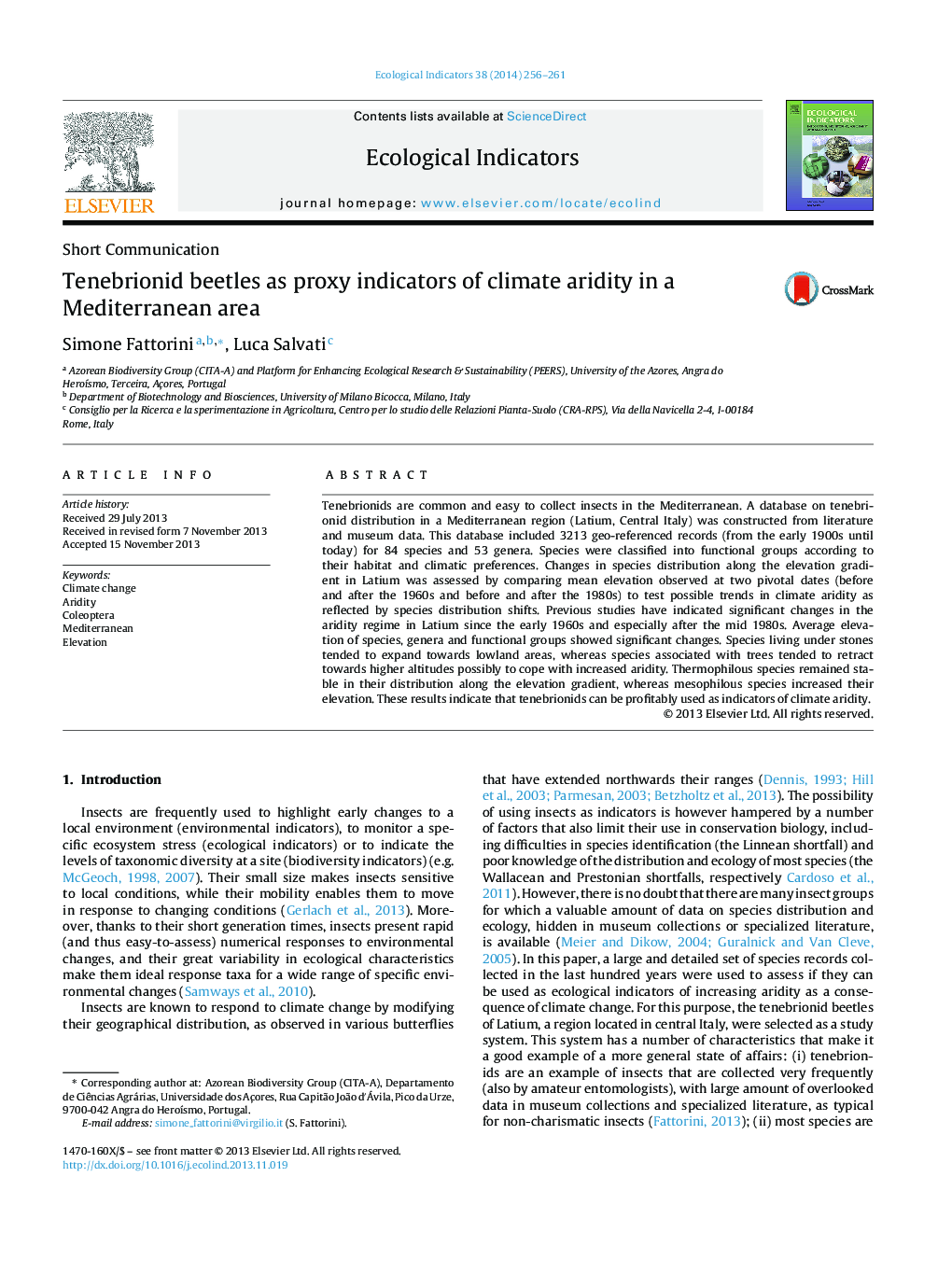| Article ID | Journal | Published Year | Pages | File Type |
|---|---|---|---|---|
| 6295200 | Ecological Indicators | 2014 | 6 Pages |
Abstract
Tenebrionids are common and easy to collect insects in the Mediterranean. A database on tenebrionid distribution in a Mediterranean region (Latium, Central Italy) was constructed from literature and museum data. This database included 3213 geo-referenced records (from the early 1900s until today) for 84 species and 53 genera. Species were classified into functional groups according to their habitat and climatic preferences. Changes in species distribution along the elevation gradient in Latium was assessed by comparing mean elevation observed at two pivotal dates (before and after the 1960s and before and after the 1980s) to test possible trends in climate aridity as reflected by species distribution shifts. Previous studies have indicated significant changes in the aridity regime in Latium since the early 1960s and especially after the mid 1980s. Average elevation of species, genera and functional groups showed significant changes. Species living under stones tended to expand towards lowland areas, whereas species associated with trees tended to retract towards higher altitudes possibly to cope with increased aridity. Thermophilous species remained stable in their distribution along the elevation gradient, whereas mesophilous species increased their elevation. These results indicate that tenebrionids can be profitably used as indicators of climate aridity.
Related Topics
Life Sciences
Agricultural and Biological Sciences
Ecology, Evolution, Behavior and Systematics
Authors
Simone Fattorini, Luca Salvati,
